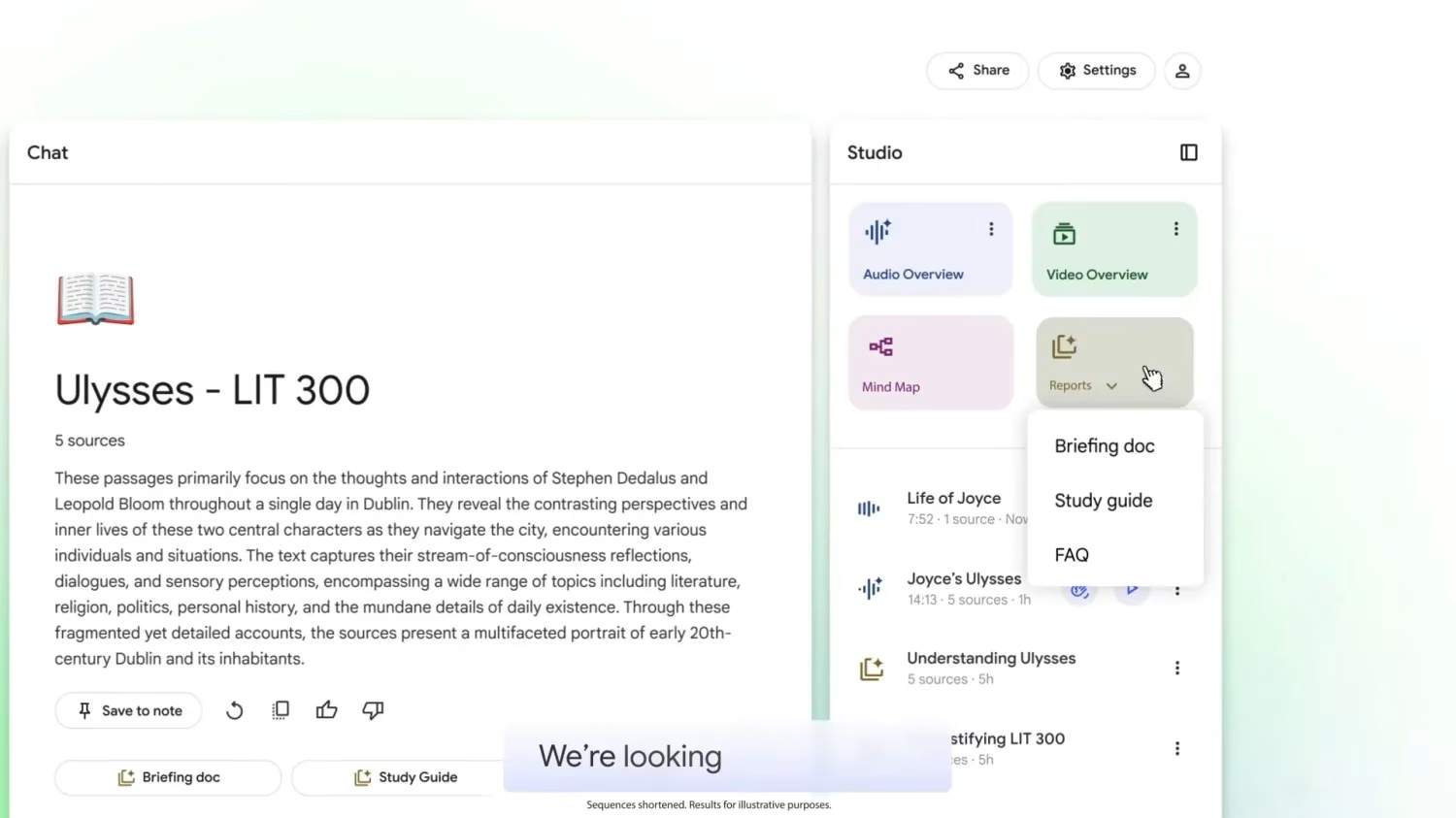Google NotebookLM Completes Global Rollout of Video Overviews and Redesigned Studio Interface
It's official: Google has wrapped up the global deployment of two significant enhancements to NotebookLM – the much-anticipated Video Overviews and a revamped Studio interface. This isn't just a minor update; it's a pretty big deal for anyone who relies on AI-powered research and content generation. The rollout, which began in late July, is now complete, meaning all eligible users worldwide should have access to these powerful new tools. For those of us who've been following NotebookLM's evolution, this marks a substantial step forward in its capability.
This completion, confirmed just hours ago, solidifies NotebookLM's position as a serious contender in the AI research assistant space. Remember when we were all just dreaming of AI that could summarize our sprawling notes? Well, we're way past that now.
The Power of Visuals: Unpacking Video Overviews
The star of this update, for many, is undoubtedly Video Overviews. If you're anything like me, sometimes reading through reams of text, even summarized text, can still feel like a chore. That's where this new feature shines. It leverages Google's advanced AI to generate narrated video summaries directly from your loaded sources and notes within NotebookLM. Think of it as your personal AI documentary maker.
Initially presented in a slideshow format, these videos aren't just static images with a voiceover. They're designed to provide a dynamic, visual explanation of complex topics. The AI intelligently pulls relevant images from your PDFs, photos, or other documents, weaving them into a coherent visual narrative alongside the generated narration. It’s a fantastic complement to the existing Audio Overviews, which give you podcast-style summaries. For visual learners, or for anyone trying to quickly grasp the essence of a dense topic, this is a game-changer. Imagine needing to understand a new concept for a presentation; instead of sifting through pages, you get a concise, narrated video. Pretty neat, right? This multimodal approach is where AI is truly heading, and Google's clearly on the ball here.
A Fresh Look and Enhanced Control: The Studio Interface Redesign
Alongside the visual summaries, Google has also rolled out a significant redesign of the NotebookLM Studio interface. This isn't just about aesthetics; it's about making the entire experience more intuitive and powerful. The old Studio panel, while functional, sometimes felt a bit clunky when you were trying to manage multiple outputs.
The new design addresses this head-on. It's built for better usability, allowing users to effortlessly create, store, and manage various AI-generated outputs within a single notebook. Whether you're generating several Video Overviews, multiple Audio Overviews, or different types of summaries, the new interface makes it a breeze to keep track of everything. You can now generate content in different languages, too, which is a huge plus for global users or those working on international projects. And the ability to share individual artifacts? That's just icing on the cake, making collaboration much smoother. It's these kinds of quality-of-life improvements that truly elevate a tool from useful to indispensable. It shows Google is listening to user feedback, refining the nuts and bolts of the user experience.
Broader Implications and the AI Landscape
So, what does this completed rollout mean for the average researcher, student, or content creator? For one, it means more efficient knowledge consumption. We're talking about a tool that can now synthesize information into both audio and video formats, making it incredibly versatile for different learning styles and use cases. NotebookLM, which already boasted over a million active users earlier this year, is likely to see a significant boost in engagement. Anecdotally, the buzz on social media since the initial announcement has been palpable.
This move also positions NotebookLM firmly within the broader trend of multimodal AI outputs. We've seen competitors like Microsoft's Copilot and OpenAI's tools dabbling in similar areas, but NotebookLM's deep integration with Google Workspace gives it a distinct advantage, especially in enterprise and educational settings. The demand for visual AI summaries has been on a steep incline, with industry reports suggesting a substantial increase in just the past year. Google's timing here is impeccable, riding that wave of demand.
While the initial generation times for videos were a bit longer during early testing (a few minutes, which isn't terrible but noticeable), Google has clearly optimized this for the full release. No major bugs or widespread issues have been reported since the final phase of the rollout, which is always a good sign. It suggests a robust and well-tested deployment.
Looking Ahead: What's Next for NotebookLM?
The completion of this rollout isn't an endpoint; it's a new beginning for NotebookLM. With these powerful new features now in the hands of all users, we can expect to see innovative ways people leverage them for research, learning, and content creation. Will we see more advanced editing capabilities for the generated videos? Perhaps deeper integration with other Google services beyond Workspace? It's exciting to think about.
The focus on visual and auditory summaries underscores a fundamental shift in how we interact with information. We're moving beyond just text, embracing richer, more engaging formats generated by AI. And frankly, it's about time. This update solidifies NotebookLM's role as a cutting-edge personal research assistant, making complex information more accessible than ever before. It's a testament to how quickly AI is evolving, and frankly, it's a little mind-boggling sometimes to see what's possible now compared to just a few years ago.
